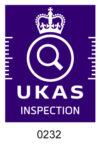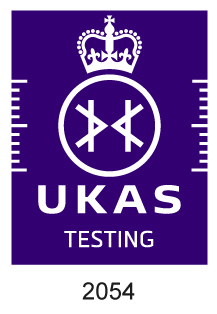Menu
close
**LATEST** New quantitative face fit services for RPE
Book in todayWith the launch of HSE’s campaign ‘Asbestos – Your Duty’ for duty holders in January 2024, it’s a pertinent reminder that awareness of workplace health and safety risks is one of the most valuable tools that duty holders and construction leaders have to make informed decisions that protect people efficiently, cost-effectively, and in a compliant manner.
With this in mind, we’re taking this chance to shine a light on the key health and safety events in asbestos, Legionella and occupational hygiene in 2023, and explain what we collectively need to learn from them.
If you work with asbestos, Legionella or on worksites where people may be exposed to construction dusts, you know that ensuring the health and safety of those in your care is your absolute priority.
Only have a minute? See our video summary here.
In January, two trade unions released landmark reports, highlighting the extent to which asbestos remained a risk in the NHS:
This situation pushed the TUC in particular to renew calls for a National Asbestos Register, as well as a 40-year deadline to remove asbestos from all non-domestic buildings.
Why does it matter?
While the statistics are new, the problem isn’t. The BBC called this situation a ‘ticking time bomb’ in 2017. The debate about whether to manage asbestos or remove it at a national level is ongoing, but for duty holders and construction leaders, as long as asbestos remains in their workplaces, or a part of their refurbishment or demolition projects, they need to ensure they act to remove it or keep it safe and monitor its condition.
This involves providing support and training to those who are making day-to-day decisions about the operation and maintenance of buildings.
In the first half of the year, the HSE launched two campaigns focused on making young tradespeople aware of the risks of asbestos (‘Asbestos and You’) and construction dusts (‘Dust Kills’).
In particular, ‘Dust Kills’ supported over 1,000 inspections of workplaces for compliance, and reported on its findings here – highlighting both good practices and cases where no controls had been put in place.
Why does it matter?
Many young constructors entering the workforce were born after asbestos was banned, and simply do not know the risks that it can present unless they have the correct support and training. Likewise, they must also be appropriately protected from construction dusts – which goes well beyond just wearing appropriate Respiratory Protective Equipment (RPE).
Asbestos fibres and many construction dusts are virtually invisible to the naked eye, and they have a long latency period before exposure results in respiratory health problems.
This is why construction leaders must take action now to help young people minimise health risks – and awareness training is the vital first principle.
The Sunday Times’ ‘Act Now on Asbestos’ campaign launched, publicising the nature of the asbestos risk affecting over 21,500+ schools in the UK, as well as sharing the personal stories of those afflicted by decades of exposure – a legacy that continues to this day.
The outcome of this campaign was far-reaching and nearly immediate, compelling the HSE to launch a programme of inspections into school asbestos management procedures.
Why does it matter?
Much like the reports focusing on asbestos in hospitals, the ‘Act Now on Asbestos’ campaign targeting schools shows the extent to which the nature of the asbestos risk is changing.
Though tradespeople remain at risk, ‘occupational exposure’ caused by working in an environment with asbestos is an increasingly pressing problem. We explained how in this blog.
This changing ‘face’ of the problem presents a challenge for duty holders, who can’t just look at asbestos safety from project to project, but as a challenge of day-to-day management.
In August, Legionella bacteria hit the headlines in a high-profile case, wherein 39 asylum seekers on the Bibby Stockholm barge had to be temporarily evacuated due to the presence of Legionella.
Our Technical Director, Bob Harris, was invited by BBC News to explain the Legionella management issues that could have played a part.
Why does it matter?
Behind the high-profile nature of this case, it served as a reminder that, even without the risk of a major public relations incident, duty holders must remember their fundamental management steps:
1) Assess the risk of Legionella in your system.
2) Implement the recommended control measures from your risk assessment and carry out remedial works to make your systems safe.
3) Monitor the risk with ongoing inspection and testing.
You can download a full Legionella risk management flowchart here.
In the last months of 2023, HSE released its annual report into occupational health – revealing that over 12,000 people lose their lives each year due to historical exposure to respiratory hazards, including over 5,000 deaths related to asbestos exposure.
However, there is important additional context that suggests the HSE’s numbers (which we summarise here) aren’t fully reflective of the changing nature of the problem – or its true scale.
The year concluded with Mesothelioma UK, presenting groundbreaking findings to Parliament about one of these issues – the risks asbestos still poses in schools and hospitals.
Why does it matter?
With over-75s and certain groups of teaching and educational staff not being included in the HSE statistics, there is likely to be a greater number of deaths attributable to asbestos than suggested.
Moreover, with 19,000 people a year developing respiratory illnesses, duty holders need to immediately be aware of just how potent asbestos and construction dust exposure can be – regardless of how long it takes for symptoms to manifest – and act to protect those in their care.
It’s very difficult to predict exactly what will happen: there’s no guarantee that a register or a national asbestos removal plan will happen, despite these being up for debate in the House of Commons, for example.
However, this shouldn’t be disheartening for duty holders and construction leaders, simply because the measures to protect those in their care are effective, and within their control:
Most importantly, however, seeking expert advice is vital – whether you are unsure of where to start, or whether you need to delegate these management priorities to a trusted expert that will keep you compliant and your projects on track.
AEC have over 25 years’ experience keeping workplaces safe, working efficiently, pragmatically and cost-effectively.
If you work with (or have a duty to manage) asbestos or Legionella, or need to protect site workers from construction dusts, simply call us at 020 3384 6175 for tailored advice on your next project.

AEC has over 25 years’ experience supporting facilities managers to make asbestos, fire safety and Legionella compliances simple, streamlined and stress-free. If you would like support with any upcoming project, don’t hesitate to get in touch with our team at [email protected], or by calling 0203 384 6175.
The bacteria thrive in temperatures between 20-45°C and where nutrients including iron and organic materials are available. The bacteria stay dormant below 20°C and do not survive above 60°C. It is therefore vitally important to carry out regularly temperature checks on your water systems.
Under the COSHH regulations, If you are an employer, or someone in control of premises, including landlords, you must take appropriate steps to identify and remove or reduce the risk of exposure to Legionella.
A Legionella risk assessment is required to demonstrate you have identified the areas at risk in your water systems and that you have a control scheme in place to manage the risks. As part of the control scheme, you must carry out regular temperature checks, which should be recorded in a logbook.
Temperature monitoring on domestic hot and cold water systems should be undertaken by competent personnel using the correct instrumentation. Temperature testing is normally required as follows;
If you are responsible for multiple properties, you may want to consider the advantages of installing remote temperature monitoring technology.
How it works
Remote temperature monitoring is a highly innovative and cost-effective way to manage multiple water systems. For example, if you have a number of residential accommodation blocks each with a water tank, these can be equipped with temperature probes which will alert you to any raised temperatures.
Each probe is linked to a central computer, which can record the data and flag up an alarm if results are outside the correct limits. It avoids the need for engineers to regularly enter properties to record temperature readings, a distinct advantage for sensitive sites such as healthcare facilities, care homes & schools. It is not intended to replace conventional temperature monitoring programmes, but can be a useful adjunct in many cases.
The technology offer solutions in remote and difficult locations to ensure you meet current ACoP L8 guidance and regulations.
If you would like to talk to our water hygiene team about how we can assist you with your water systems please contact [email protected] or call Manchester 0161 872 7111 or London 0203 384 6175
Legionella bacteria multiplies where temperatures are between 20-45°C.
It thrives in warm, stagnant water environments such as hot water cylinders and cold-water storage tanks that are prone to heat gain and the extreme summer temperatures may have created the perfect breeding ground to create Legionella risks in your water systems.
Areas in your school that could be affected are:
To reduce the Legionella risk and to ensure the safety of all staff, children and visitors, it is the duty holder’s responsibility to appoint a competent person or contractor to carry out regular maintenance checks. All of the checks must be recorded in a suitable logbook and should be available for inspection as required. If you carry out any maintenance work on your water systems, you are required to review your Legionella risk assessment or carry out a new one if you have made major changes that make the existing assessment invalid.
If you would like to talk to our water hygiene team about how we can assist you with your water systems please contact [email protected] or call Manchester 0161 872 7111 or London 0203 384 6175
If you have a water system at work, you need a Legionella risk assessment.
If you are an employer, or someone in control of premises, including landlords, you must take appropriate steps to identify and remove or reduce the risk of exposure to Legionella.
As the duty holder, you have a legal responsibility to assess the risk of Legionella exposure in your water systems and to ensure you have control measures in place to reduce the risk, in order to comply with the Health and Safety at Work Act, COSHH and the Management of Health and Safety at Work Regulations.
The duty holder or the appointed ‘responsible person’, must understand where the sources of risks are in the water system, how to manage and prevent them and importantly, keep and update records regularly.
In order to identify where the risks may be in your water systems, you need to carry out a Legionella risk assessment (you can do this if you have the necessary knowledge or competency) or employ an external consultant.
A competent and fully qualified water hygiene consultant will:
After the risk assessment, a written scheme of control will need to be implemented to ensure that the risks are being controlled. The risk assessment may identify a range of remedial measures that need to be undertaken to control Legionella risk. These may include physical repairs or alterations to the water system, cleaning and disinfection works, and ongoing maintenance, text, inspection and monitoring works.
A review of the management / control measures should be carried out on an annual basis and documented. You can do this yourself, or ask an external provider to carry out the review on your behalf.
Important: If you make substantial alterations to your water systems or the building undergoes a change of use or ownership, the risk assessment must be updated to reflect changes. In most cases, a two-yearly risk assessment review is sufficient.
Further Information
AEC is a member of the Legionella Control Association (LCA) and our services are delivered to the highest standards of technical proficiency, competence and customer care.
All Legionella risk assessments are carried out to the requirements of BS 8580 by qualified, competent and experienced staff.
Further information about Legionella training courses can be found here – AEC Legionella Training.If you would like to talk to our water hygiene team about how we can assist you with your water systems please contact [email protected] or call Manchester 0161 872 7111 or London 0203 384 6175

